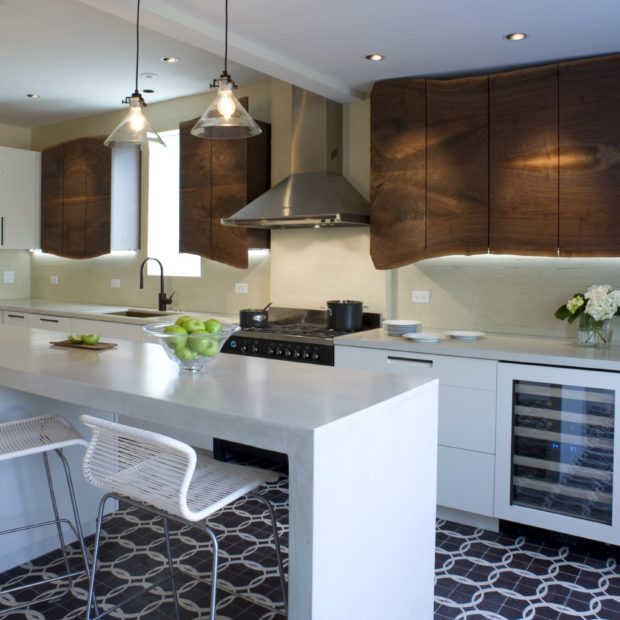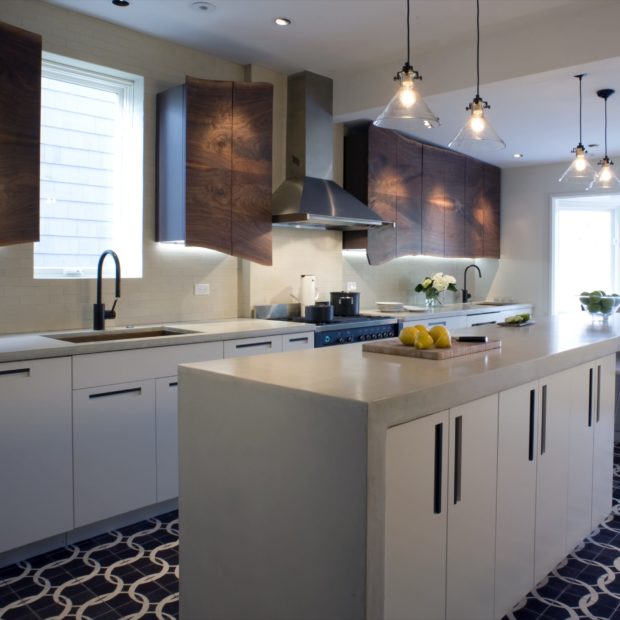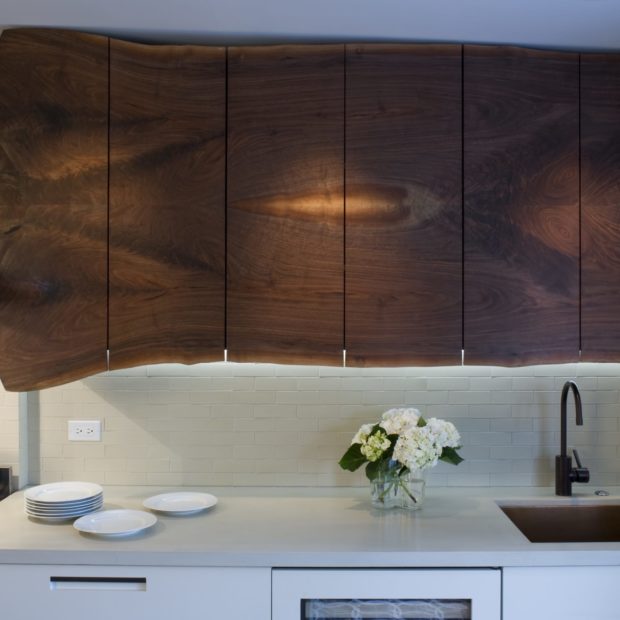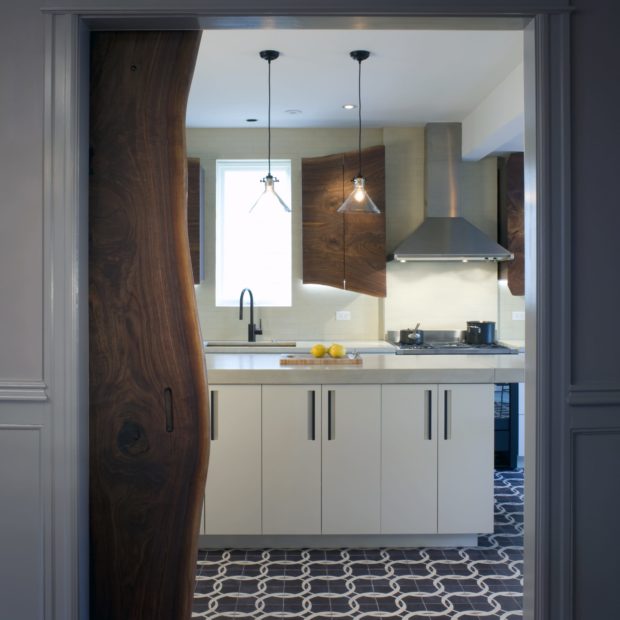Kitchen Remodel in Cleveland Park NW, Washington, DC
Project Overview
Architect VW Fowlkes, of Fowlkes Studio was well into the kitchen design process when he approached us about acting as the general contractor for this Washington DC home renovation. At the time he brought us on board, schematic design was complete, and we were presented with the preliminary plans. After meeting with the homeowner, we submitted an initial estimate for the remodel, as well as a proposal to enter what we call the “preconstruction phase”. This is the final part of the design process, where we meet with the architect (or designer) and homeowner to finalize the details. We met frequently during the final weeks of design to give feedback on costing, and any construction related issues that came up.
Design and Layout
Because the project was not designed in-house, our role as contractor was limited to construction related questions. Being involved in the pre-construction process early enough allows us to plan for the job, and address any construction related issues that may have been overlooked during the preliminary stages. In this case, working with both the architect and the homeowner was a pleasure, and we were happy to be a part of the team.
Style and Finishes
The architect and homeowner chose contemporary white cabinetry with integrated hardware, a unique concrete tile, and concrete countertops. They then chose a particular walnut log, which was fashioned into a beautiful sliding barn door and cabinetry doors. Because the cabinet doors came from the same log, the wood grain was continuous throughout. During the project, an emphasis was placed on original design, and hand-made pieces. In our opinion, the result justified the hard work put in by the client and designer.
Construction and Final Product
In general, the construction went well. We were able to set up a temporary kitchen in the basement, which was helpful. Wood framed houses of that age are often framed in illogical ways, but this did not surprise us. We did find that previous renovations had been poorly done and under engineered. A rear addition was sinking into the ground, and pulling the back part of the kitchen away from the rest of the house, and several ceiling joist had been cut most of the way through to allow for plumbing pipes. We fixed what we could, and there are plans to install helical piers in the future. Because of the unconventional material choices, we were forced to use vendors who we wouldn’t otherwise use. Promised delivery dates were missed, leaving our construction team no other choice but to juggle the schedule time and time again. One vendor, in addition to being late, performed sloppy work, which he was seemingly unwilling to fix. We worked with the architect and client to come up with a solution, to make sure the work was finished well.





